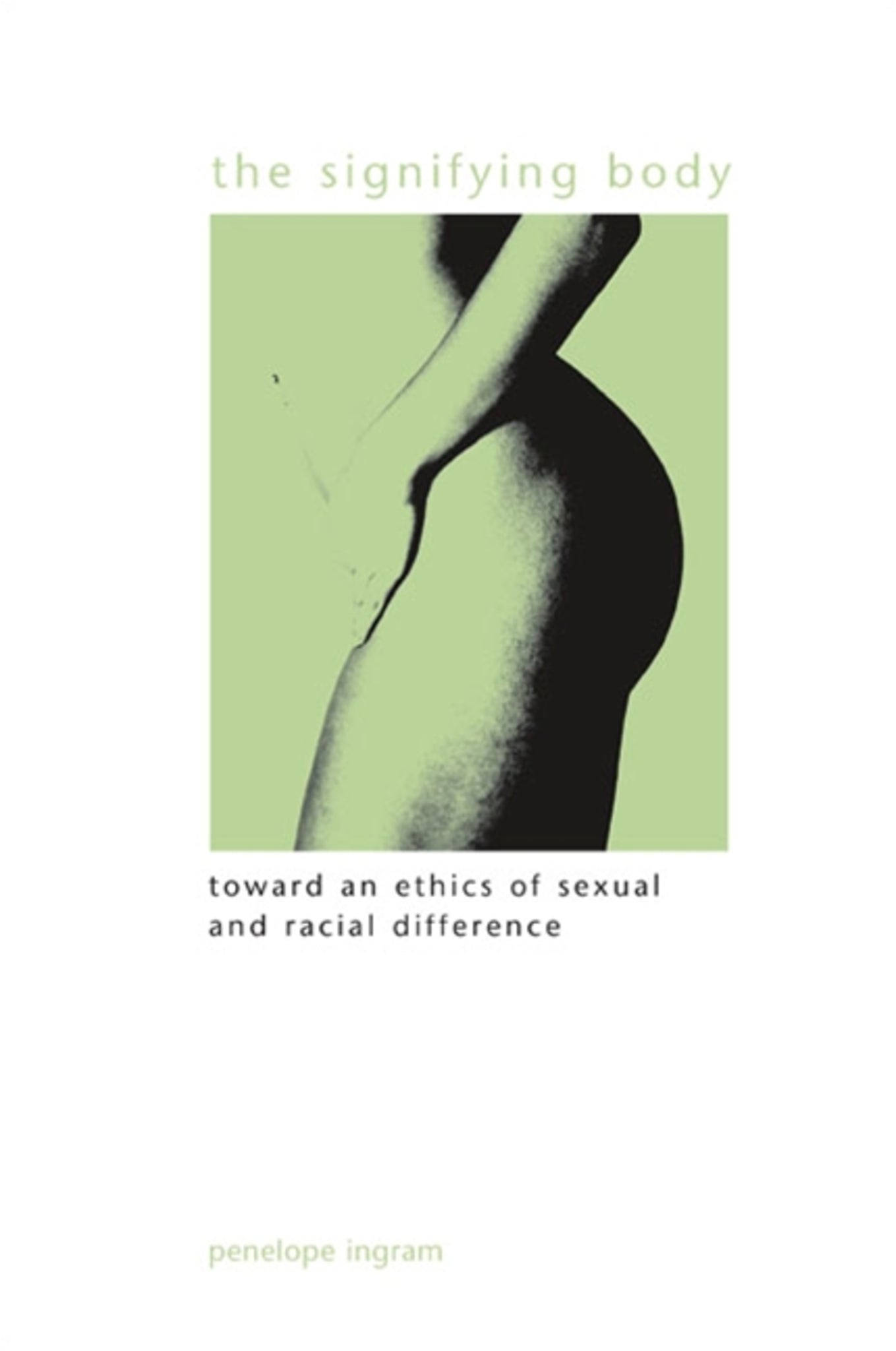We're sorry. An error has occurred
Please cancel or retry.
The Signifying Body

Some error occured while loading the Quick View. Please close the Quick View and try reloading the page.
Couldn't load pickup availability
- Format:
-
08 January 2009

Applies the ideas of Heidegger, Irigaray, and Fanon to literature and film.
How do we live ethically? What role do sex and race play in living or being ethically? Can ethics lead to ontology? Can literature play a role in ethical being? Drawing extensively on the work of Luce Irigaray, Frantz Fanon, and Martin Heidegger, Penelope Ingram argues that ethical questions must be understood in light of ontological ones. It is only when sexual and racial difference are viewed at an ontological level that ethics is truly possible. Central to the connection between ontology and ethics is the role of language. Ingram revisits the relationship between representation and matter in order to advance a theory of material signification. She examines a number of twentieth-century film and literary texts, including Neil Jordan's The Crying Game, J. M. Coetzee's Foe, Toni Morrison's Paradise, and Don DeLillo's The Body Artist, to demonstrate that material signification, rather than representation, is crucial to our experience of living authentically and achieving an ethical relation with the Other. By attending closely to Heidegger's, Irigaray's, and Fanon's positions on language, this original work argues that the literary text is indispensable to a "revealing" of the relationship between ontology and ethics, and through it, the reader can experience a state of "authentic Being ethically."


"The Signifying Body is actually a deceptively thin book, which belies the dense theoretical work taking place in its 150 pages." — JAC
"The topic of this book is significant and important. First, there needs to be more work that explores the intersection of race and gender in continental philosophy, and this book is a valuable example of such work. Second, the author bridges the gap between studies of Fanon and discussions of gender and sexual identity in continental philosophy. She also brings together Fanon, Heidegger, and Irigaray in a manner that pushes the scholarship on all three figures. Finally, the author's attempt to theorize the ethical encounter of the racial, sexual, and gendered Other is intriguing and should help to further the debate on that issue." — Ronald Sundstrom, University of San Francisco
Acknowledgments
Introduction: Making Metaphysics Matter
1. Representing Difference
2. Mocking the Mirror
3. The Call to Ethics
4. Embodying Transcendence
5. Reading the Signifying Body
Conclusion: Language and Ethics: Signifying the Work of Art
Notes
Works Cited
Index



